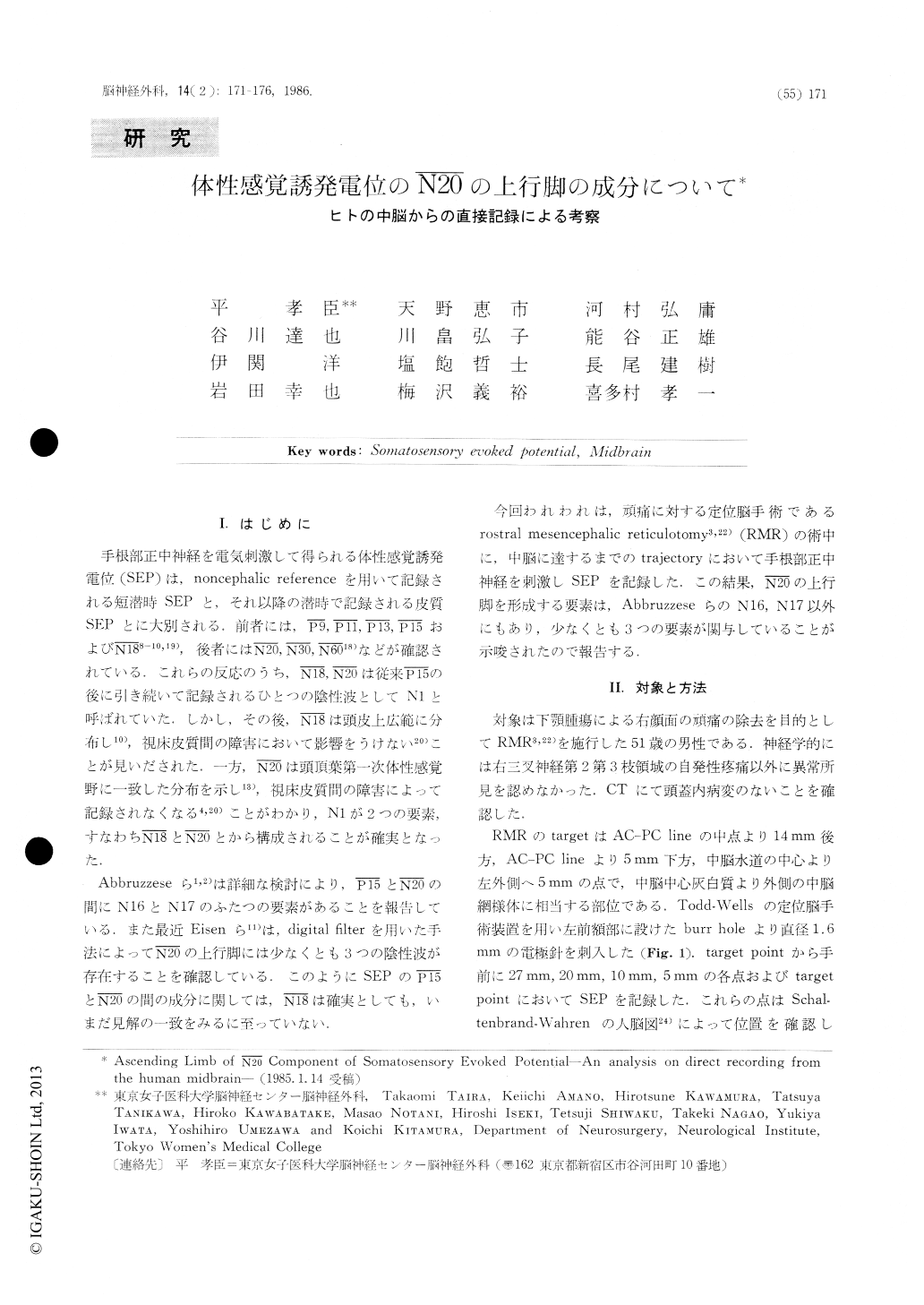Japanese
English
- 有料閲覧
- Abstract 文献概要
- 1ページ目 Look Inside
I.はじめに
手根部正中神経を電気刺激して得られる体性感覚誘発電位(SEP)は,noncephalic referenceを用いて記録される短潜時SEPと,それ以降の潜時で記録される皮質SEPとに大別される.前者には,P9,P11,P13,P15およびN1818-10,19),後者にはN20,N30,N6018),などが確認されている.これらの反応のうち,N18,N20は従来P15の後に引き続いて記録されるひとつの陰性波としてN1と呼ばれていた.しかし,その後,N18は頭皮上広範に分布し10),視床皮質間の障害において影響をうけない20)ことが見いだされた.—方,N20は頭頂葉第一次体性感覚野に一致した分布を示し13),視床皮質間の障害によって記録されなくなる4,20)ことがわかり,N1が2つの要素,すなわちN18とN20とから構成されることが確実となった.
Abbruzzeseら1,2)は詳細な検討により,P15とN20の間にN16とN17のふたつの要素があることを報告している.また最近Eisenら11)は,digital fiterを用いた手法によって両の上行脚には少なくとも3つの陰性波が存在することを確認している.このようにSEPのP15とN20の間の成分に関しては,N18は確実としても,いまだ見解の一致をみるに至っていない.
Somatosensory evoked potential elicited by median nerve stimulation at the wrist was recorded from five loci on the trajectory of stereotactic rostral mensencephalic reticulotomy. Four distinct positive waves followed by one negative wave, the peak latency being 16.3 msec, were recorded from the rostral midbrain reticular formation near the medial lemniscus. The four positive waves were named as I. II, III and IV respectively. Peak latency of these positive waves was 12.6, 13.7, 14.7 and 15.8 msec respectively. The first two positive waves (I, 11) corresponded to P13 and P15 recorded over the scalp.

Copyright © 1986, Igaku-Shoin Ltd. All rights reserved.


